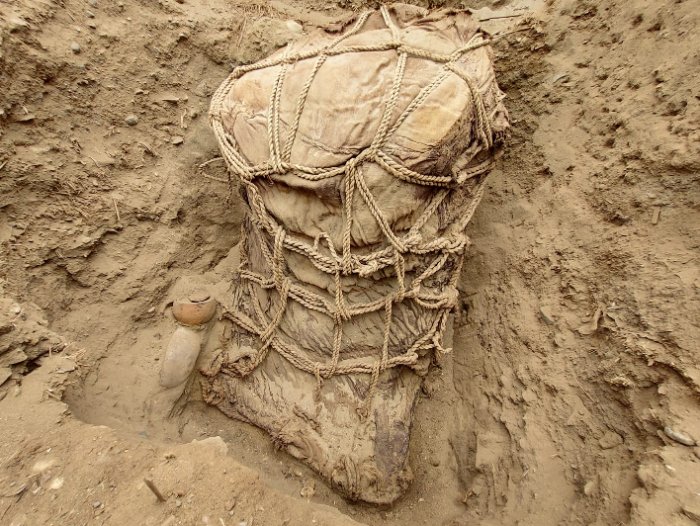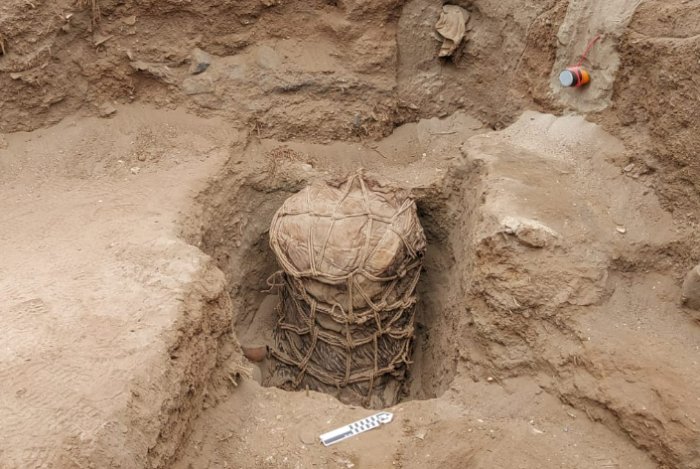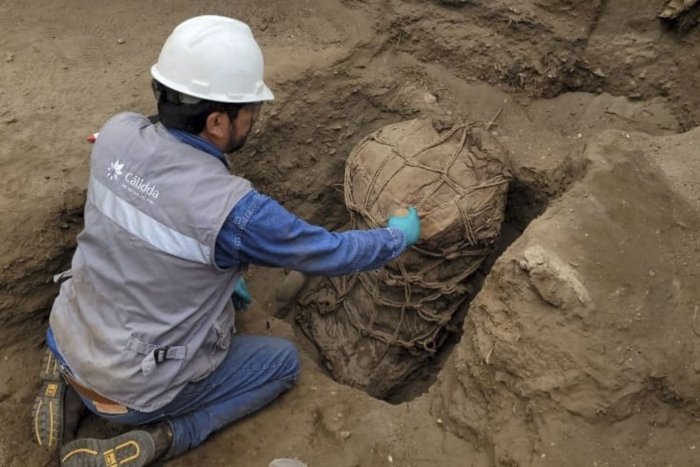Conny Waters – AncientPages.com – Archaeologists unearthed a 500-year-old funerary bundle and pottery during work on a natural gas line near Lima’s central coastline.
The bundle, wrapped in mats and tied with ropes arranged in a geometric pattern, is thought to belong to the Ychsma culture.

The tomb contains remains, offerings, and the funerary bundle that was found along with various offering artifacts, such as mate vessels and ceramics. Image credit: Andina
This pre-Inca indigenous and well-organized society was later absorbed by the Inca Empire and reorganized as a wanami (province). For the Inca, it was known as Pachakamaq (Pachacamac), rather than its original name of Ishma.
The Kingdom was located south of Lima, Peru in the Lurín River valley and later spread north into the Rímac River valley. The Ishma culture was formed around 1100 AD following the breakup of the Wari Empire. Ishma’s autonomy lasted until around 1469 when they were absorbed into the Incan Empire.
The inhabitants of Ishma had a high standard of living (despite occupying a desert. They had multiple irrigation channels as far as the river waters could reach. Their vast orchard and forests flourished.

PH๏τo: ANDINA/Calidda
A pre-Hispanic tomb of a person from the Ychsma society dating back 500 years ago was found in Lima’s Ancon district as Calidda —the enтιтy responsible for the natural gas distribution network infrastructure— carried out works in the area.
The tomb contains remains, offerings, and the funerary bundle that was found along with various offering artifacts, such as mate vessels and ceramics,” writes Andina.
The discovery dates back to the Late Period of the Ychsma Culture and joins the more than 1,700 archaeological discoveries the company has made in Lima and Callao.
According to Calidda’s team of archaeologists, this funerary bundle was found bound by ropes that were arranged in a geometric pattern and covered by mats that kept it in good condition.
“Calidda has a team of archaeologists who supervise all natural gas installation works to ensure the protection of the city’s archaeological heritage,” said Luciana Caravedo, director of Sustainability and Reputation at Calidda.

PH๏τo: ANDINA/Calidda
“We work hand-in-hand with the Ministry of Culture to rescue and preserve the findings; likewise, we are firmly committed to researching and disseminating our history, thus contributing to strengthen the pride of what is ours,” Caravedo added.
Around 1,700 archaeological contexts have been recovered and investigated during natural gas installation works, in coordination with the Ministry of Culture, in the last eight years (in Lima, Callao, Chilca, and Cañete).
The results of the investigations are used to tell the millennial history of Lima and Callao to the community as a whole, in a joint effort with local municipalities, the Ministry of Culture, and other organizations.
Written by Conny Waters – AncientPages.com Staff Writer





